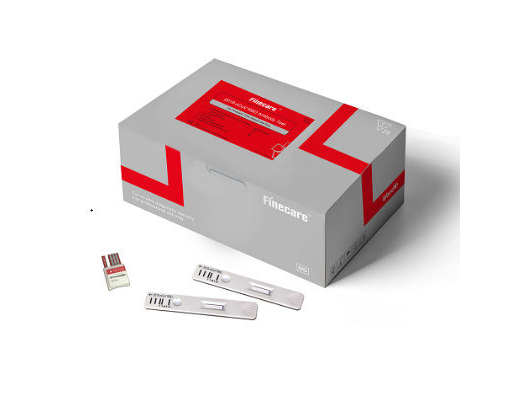Shining a Light on Infant Phototherapy: How Halogen Technology is Revolutionizing Treatment
Unveiling the Secret of Halogen Technology: How it’s Transforming the Way Infants Receive Phototherapy.
 Image courtesy of Bruno Kraler via Pexels
Image courtesy of Bruno Kraler via Pexels
Infant phototherapy plays a crucial role in neonatal care, particularly in the treatment of jaundice. This condition is quite common among newborns, and effective treatment is essential to prevent complications. In recent years, halogen-based technology has emerged as a game-changer in the field of infant phototherapy. This blog post aims to provide a comprehensive overview of infant phototherapy and highlight the numerous advantages of using halogen-based units in neonatal care.
Understanding Infant Phototherapy
Infant phototherapy is a treatment method that involves exposing newborns to specific wavelengths of light to break down excess bilirubin in their bodies. Bilirubin is a yellow pigment that is formed when old red blood cells break down. High levels of bilirubin can lead to jaundice, characterized by yellowing of the skin and eyes. The primary purpose of phototherapy is to reduce bilirubin levels and alleviate the symptoms of jaundice.
Stay informed with our latest updates on groundbreaking infant phototherapy advancements.
Mechanism of Action
Phototherapy works by converting bilirubin into a water-soluble form that can be excreted from the body. Halogen-based phototherapy units emit specific wavelengths of light that are absorbed by the bilirubin, causing it to break down into harmless byproducts. Compared to traditional methods, halogen technology offers superior spectral output and intensity control, allowing for a more effective and balanced treatment.
The Role of Halogen-Based Infant Phototherapy Units
Halogen-based infant phototherapy units have significant advantages over conventional methods of treatment. These units utilize halogen light, which offers a compact and intense light source, ideal for treating newborns. The following subsections highlight the advantages and safety measures associated with halogen-based technology.
Advantages of Halogen Technology
Halogen-based units provide several advantages in the context of phototherapy. These units are designed to offer a balanced spectrum of light, specifically targeting the breakdown of bilirubin. The customizable light intensity allows healthcare professionals to tailor the treatment to the individual needs of each infant, ensuring optimal effectiveness. Furthermore, the compactness and portability of halogen-based units make them easy to maneuver and position accurately, ensuring maximum exposure to the light source.
Safety Measures
Safety is a paramount concern when it comes to neonatal care. Halogen-based phototherapy units incorporate safety measures to minimize potential risks to newborns. One crucial aspect is the minimal heat radiation emitted by these units, reducing the risk of overheating and discomfort for the infants. Additionally, halogen technology is compatible with various phototherapy devices, ensuring seamless integration into existing neonatal care protocols.
Features to Look for in an Infant Phototherapy Unit
When selecting an infant phototherapy unit, several essential features contribute to its effectiveness and ease of use. The following subsections outline the key aspects to consider during the evaluation process.
 Image courtesy of en.wikipedia.org via Google Images
Image courtesy of en.wikipedia.org via Google Images
Optimal Light Spectrum
An ideal infant phototherapy unit should provide a specific spectrum of light that ensures efficient breakdown of bilirubin. Halogen-based units offer precisely targeted wavelengths that maximize the treatment’s effectiveness. Additionally, the ability to customize light intensity allows healthcare professionals to tailor the treatment to each infant’s individual needs.
Ergonomic and User-Friendly Design
The design of an infant phototherapy unit significantly impacts its usability and practicality. A well-designed unit should prioritize the comfort of both the newborn and the healthcare professional. Features such as adjustable height, swivel head, and easy access to the infant for monitoring and care contribute to a smooth treatment experience. Ergonomics and user-friendliness enhance the efficiency and efficacy of neonatal care.
Monitoring and Documentation Capabilities
Accurate monitoring and documentation are vital in neonatal care. The incorporation of monitoring systems into halogen-based phototherapy units provides valuable data for healthcare professionals. Temperature sensors and treatment timers ensure precise monitoring, while equipment loggers assist in maintaining comprehensive records. These features contribute to better assessment and informed decision-making throughout the treatment process.
Case Studies and Success Stories
Real-life experiences and success stories provide concrete evidence of the benefits of using halogen-based infant phototherapy units. Neonatal units that have adopted this technology report positive outcomes and improved management of neonatal jaundice. By implementing halogen-based phototherapy units, healthcare professionals have observed faster and more effective bilirubin reduction, minimizing the need for additional treatment methods.
Discover the Power of Halogen – Subscribe Today!
Stay informed with our latest updates on groundbreaking infant phototherapy advancements.
Conclusion
The use of halogen technology in infant phototherapy has revolutionized neonatal care. These units enhance treatment efficacy while prioritizing the safety and comfort of newborns. The numerous advantages, such as optimal light spectrum, user-friendly design, and monitoring capabilities, make halogen-based units a valuable addition to neonatal care protocols. By staying informed about the latest advancements in infant phototherapy, healthcare professionals can improve outcomes and provide the best possible care for newborns.
Remember to always consult a healthcare professional for personalized advice regarding infant phototherapy and any other medical concerns.





